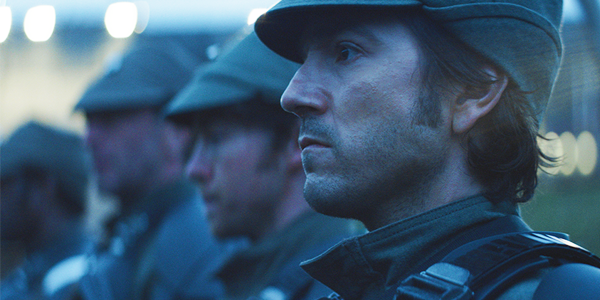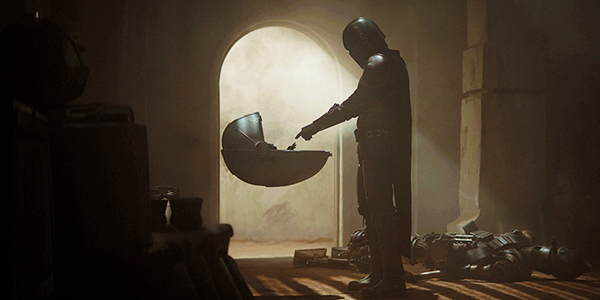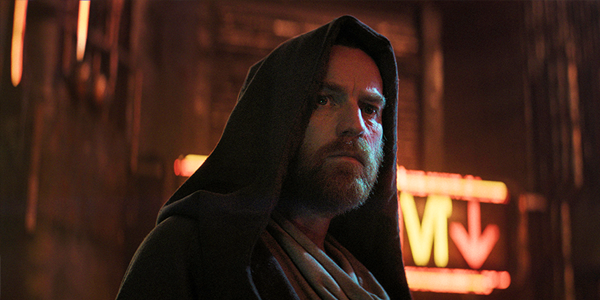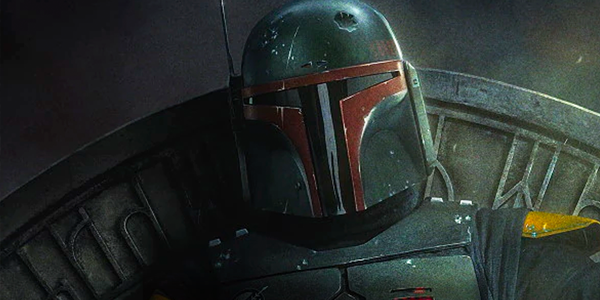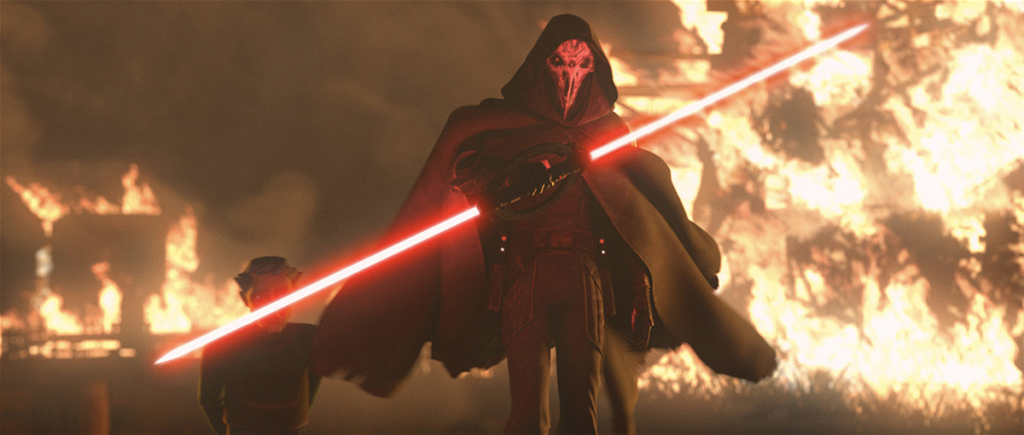
review | Tales of the Jedi
This Disney+ animated series proves you can still tell a family-friendly Star Wars tale that has real emotional depth
by Dennis Burger
October 27, 2022
For the better part of 15 years I’ve been begging anyone who would listen to give Dave Filoni’s brilliant animated series The Clone Wars the chance it deserves. But even the most devoted Star Wars fans in my life have largely written the series off, either due to the fact that it’s animated or that the first season is an uneven slog. No amount of pleading has convinced most of them that by the third season it starts to become some of the best television ever made.
If nothing else, the new Tales of the Jedi lowers the barrier to entry into Filoni’s CG take on this beloved mythology, and if that’s all it accomplished it would be a stunning success. At just over 95 minutes split across six short films ranging from 12 to 19 minutes each, this anthology series is an easily digestible snapshot that demonstrates why the writer and executive producer is such a gifted storyteller.
But it’s actually much more than that. Breaking from the serialized storytelling tradition of The Clone Wars, The Bad Batch, and Rebels before it, Tales of the Jedi is a collection of parables focused more on tonal and thematic through-lines than narrative ones. It’s a study in contrasts, an exploration of right and wrong, dark and light, strength and weakness. It explores what happens when ideology comes into conflict with principles, when rhetoric doesn’t match reality, and how circumstances out of our control mold us as humans—but it also underlines our responsibility to avoid blaming circumstance.
The visual style will be familiar to anyone who has followed Clone Wars and Bad Batch, but it’s a further evolution thereof. What started as an homage to Supermarionation in CGI form has grown into a style of its own. Dolby Vision is employed here to paint with light and shadow, almost as a sort of literal manifestation of the series’ emotional themes. But it’s never showy.
Take the first episode, for example, which takes place in the small village where Ahsoka Tano (one of two characters at the center of these interwoven parables) was born. As her mother emerges from their hut, the HDR is used to force the viewer’s eye to react to the transition from interior to exterior at exactly the same time as the characters. It’s almost a form of forced empathy, and if it didn’t work it would be just a gimmick, but it works.
I’m almost inclined to describe the imagery on the whole more in terms of cinematography than composition. There were a couple of times I found myself trying to figure out what lenses were used in certain shots, which is ridiculous, of course. The series was rendered, not shot. But it’s easy to forget that at times—not because the animation is or attempts to be hyper-realistic but rather because it’s consistent and artful enough to make you buy into this highly stylized reality.
The Dolby Atmos mix functions similarly, not wowing you for the sake of wow but rather enhancing the environments and moods. Height-channel effects tend to be more ambient—at least as far as I noticed. At some point, I just stopped thinking about the sound mix altogether, which is how I like them.
I will say this about the sound, though: Composer Kevin Kiner returned to do the score for Tales of the Jedi but I found his music for this one almost unrecognizable. He has crafted a musical soundscape that somehow finds common ground with Vangelis and Philip Glass alike without aping the style of either. It’s frankly some of his best work to date. I keep saying that, I know, but he keeps getting better.
You’ll no doubt hear quite a bit about how Liam Neeson teamed up with his son, Micheál Richardson, to voice Qui-Gon Jinn at different stages in his life in the middle installments of this short series. You’ll also likely hear about Bryce Dallas Howard’s participation. I guess that’s the sort of thing marketing teams and PR companies focus on these days, but Tales of the Jedi doesn’t succeed or fail based on who voiced whom or which character secrets are revealed.
As I write this, Andor is in the middle of proving that you can craft an adult Star Wars story without pandering to Gen-X nostalgia or devolving into grimdark edginess. Tales of the Jedi proves you can still tell genuinely family-friendly stories in that galaxy far, far away, with rich emotional depth, deeply resonant themes, and without making every aspect of the story a callback to one that’s already been told.
Whether you’re seven or 77, whether you’ve seen every Star Wars cartoon ever made or you just barely know the difference between a lightsaber and landspeeder, there’s something here for you. And if this is what it takes to convince you to get off your butt and finally watch The Clone Wars, all the better.
Dennis Burger is an avid Star Wars scholar, Tolkien fanatic, and Corvette enthusiast who somehow also manages to find time for technological passions including high-end audio, home automation, and video gaming. He lives in the armpit of Alabama with his wife Bethany and their four-legged child Bruno, a 75-pound American Staffordshire Terrier who thinks he’s a Pomeranian.
PICTURE | Dolby Vision is employed to paint with light and shadow, almost as a sort of literal manifestation of the series’ emotional themes, but it’s never showy
SOUND | The Atmos mix doesn’t wow you for the sake of wow but rather enhances the environments and moods, with the height-channel effects tending to be more ambient
© 2025 Cineluxe LLC


